Choosing the best Canon lenses for your needs can be tricky. Canon’s EOS EF (Electro-Focus) lens mount stretches way back to 1987, which means it's a brilliantly mature system with lots of options. (Looking for the best Canon RF lenses for your mirrorless camera? Check out our separate guide on those).
With nearly 35 years under its belt, there’s naturally a vast range of lenses available from a wide range of manufacturers at different price tags, from double-digit impulse buys to multi-thousand-pound investments. We're here to cut through the confusion and help you choose the best Canon lenses for you.
The diversity of choice makes for some tough decisions. A starting point is to consider just how good your next lens needs to be. At what point are you happy to trade weight for image quality? How important is weather-sealing? Then there’s the question of using Canon’s own-brand lenses versus an increasingly high-quality range of options from third party manufacturers, who are taking the fight to Canon at everything from budget-friendly to professional-grade lenses.
We’ve got a separate guide on the best RF lenses for Canon’s full-frame mirrorless EOS R cameras but, for now, let’s focus on the best lenses for Canon DSLRs. We've split the guide into two sections.
In the first, we'll be looking at the best Canon lenses for APS-C format DSLRs like the Canon EOS 90D and Canon EOS Rebel SL3 / EOS 250D. After that, we’ll be moving onto full-frame compatible lenses for cameras like the Canon EOS 6D Mark II and Canon EOS 5D Mark IV. Whatever your Canon camera or budget, you'll find the best Canon lenses for you in this guide.
Jargon buster: lens types
Before we start, it’s worth getting the designations of lenses clear at this point.
Canon’s EF (Electro-Focus) lens mount dates back to 1987 and the 35mm film era. The EF-S variant was launched in 2003, to suit Canon DSLRs with smaller, APS-C image sensors (such as the 90D).
There are no problems using EF lenses on APS-C format cameras, but you can’t use an EF-S lens on a full-frame DSLR. The classifications used by Sigma are DC (APS-C) and DG (full-frame) and for Tamron it’s Di-II (APS-C) and Di (full-frame).
We’ve put all of the main contenders through their paces with rigorous lab testing and shooting in all manner of ‘real-world’ scenarios
Canon or third party?
If you’ve got a Canon camera, it might seem sensible to use Canon lenses. However, third-party lenses from the likes of Sigma and Tamron often give similar or even better performance than own-brand Canon lenses, and at more competitive prices.
For this piece, we put all of the main contenders in the various categories through their paces with rigorous lab testing and shooting in a variety of different 'real-world' scenarios.
From those results, here are the best-buy lenses for your Canon APS-C camera body. As well as outright winners in each category, we’ve included some best-value alternatives if you're on a tighter budget.

Best Canon lenses for APS-C DSLRs in 2021:
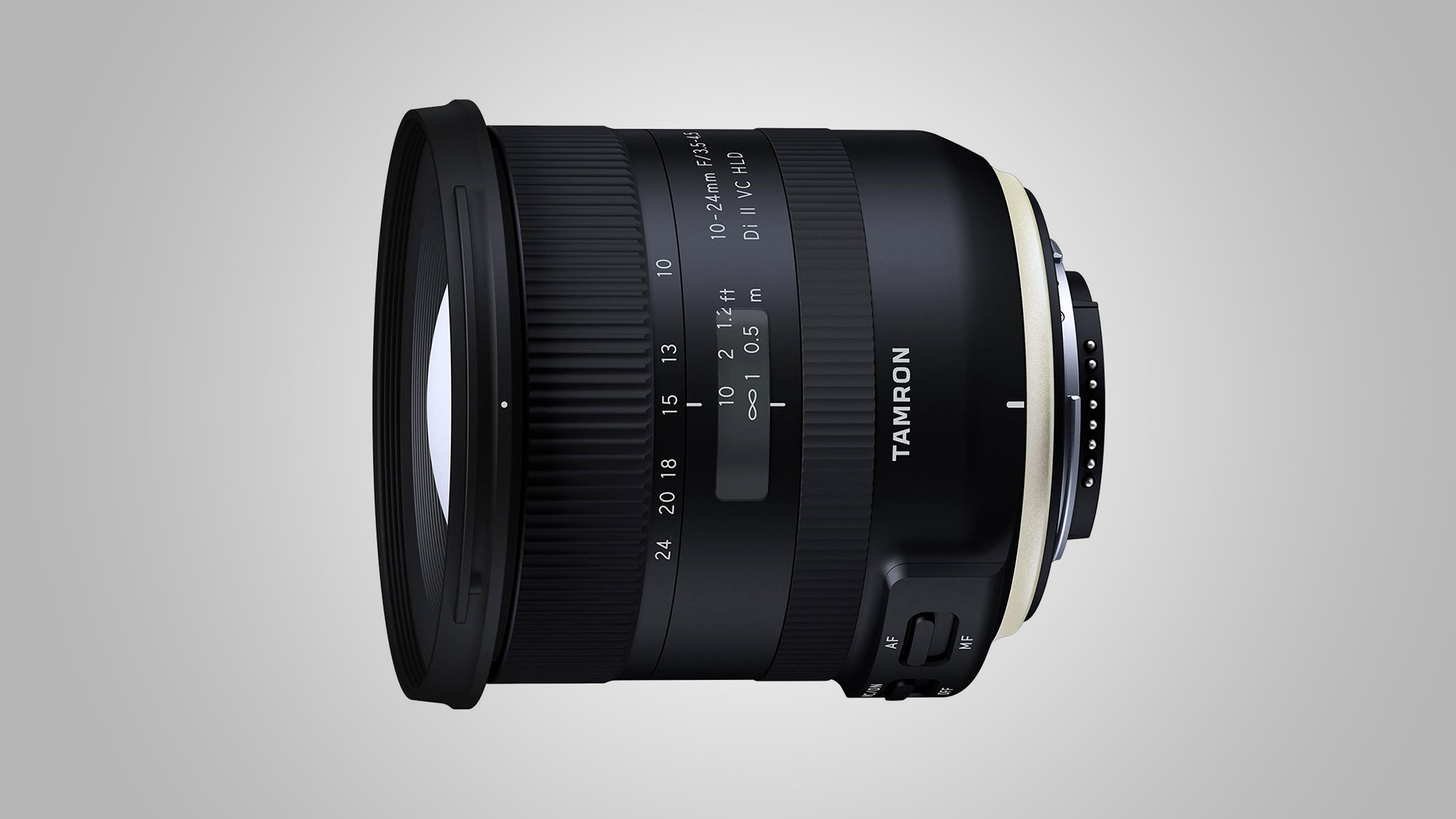
A major upgrade from Tamron’s original 10-24mm lens, the ‘VC HLD’ edition adds image stabilization and a new autofocus system, which is quicker and quieter. Handling is also improved, because the focus ring no longer rotates during autofocus. The good-quality build includes weather seals and a keep-clean fluorine coating on the front element. Image quality benefits from good sharpness and contrast, along with well-contained distortions for an ultra-wide zoom lens, and fairly minimal color fringing.
Great-value option: Canon EF-S 10-18mm f/4.5-5.6 IS STM
Around half the price of the price of the Tamron 10-24mm, this is a top-value buy. It matches the Tamron’s maximum viewing angle, includes image stabilization and has a compact, lightweight build that’s well matched to bodies like the EOS Rebel T6 / 1300D and EOS Rebel SL3/250D.

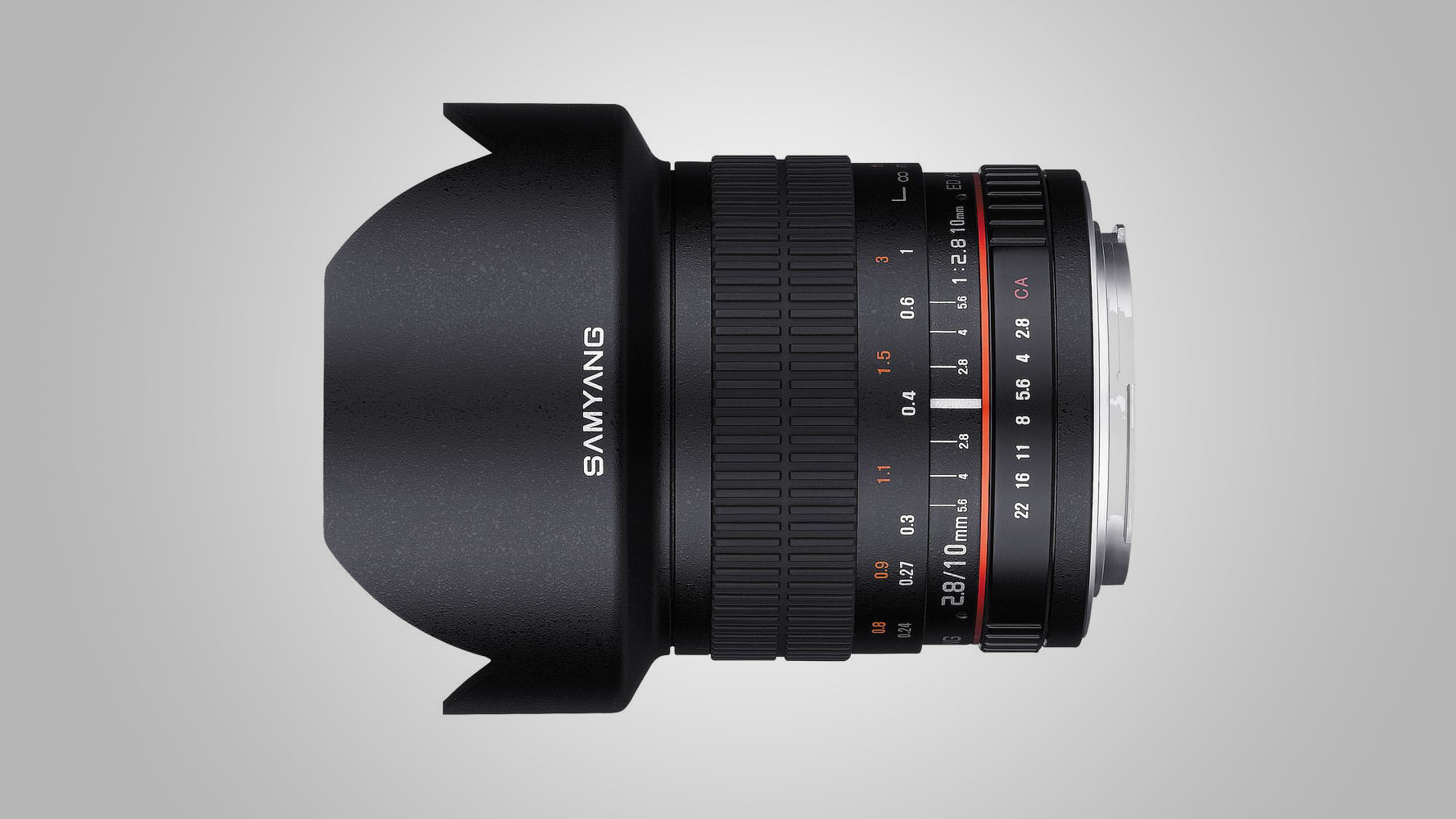
When you're 100% used to autofocus, going back to manual focus might feel like a backwards step. However, a lens like this gives you such a huge depth field and a short focal length that accurate focusing is less critical. Better yet, the Samyang's distance scale gives you the option to try traditional focusing methods for subjects such as landscape and street photography, such as setting the hyperfocal distance and 'zone focusing'. In terms of image quality, a smart design and high-quality glass helps ensure lovely sharpness, while nano-structure coatings help to keep ghosting and flare to a minimum.
Great-value option: N/A
Samyang's wide-angle prime is a bit of an anomaly, making wide-angle prime lenses for APS-C format cameras almost non-existent. You could try the Canon EF-S 24mm pancake lens, but by the time you take the crop factor into account, it's less 'wide-angle' and more 'standard'.

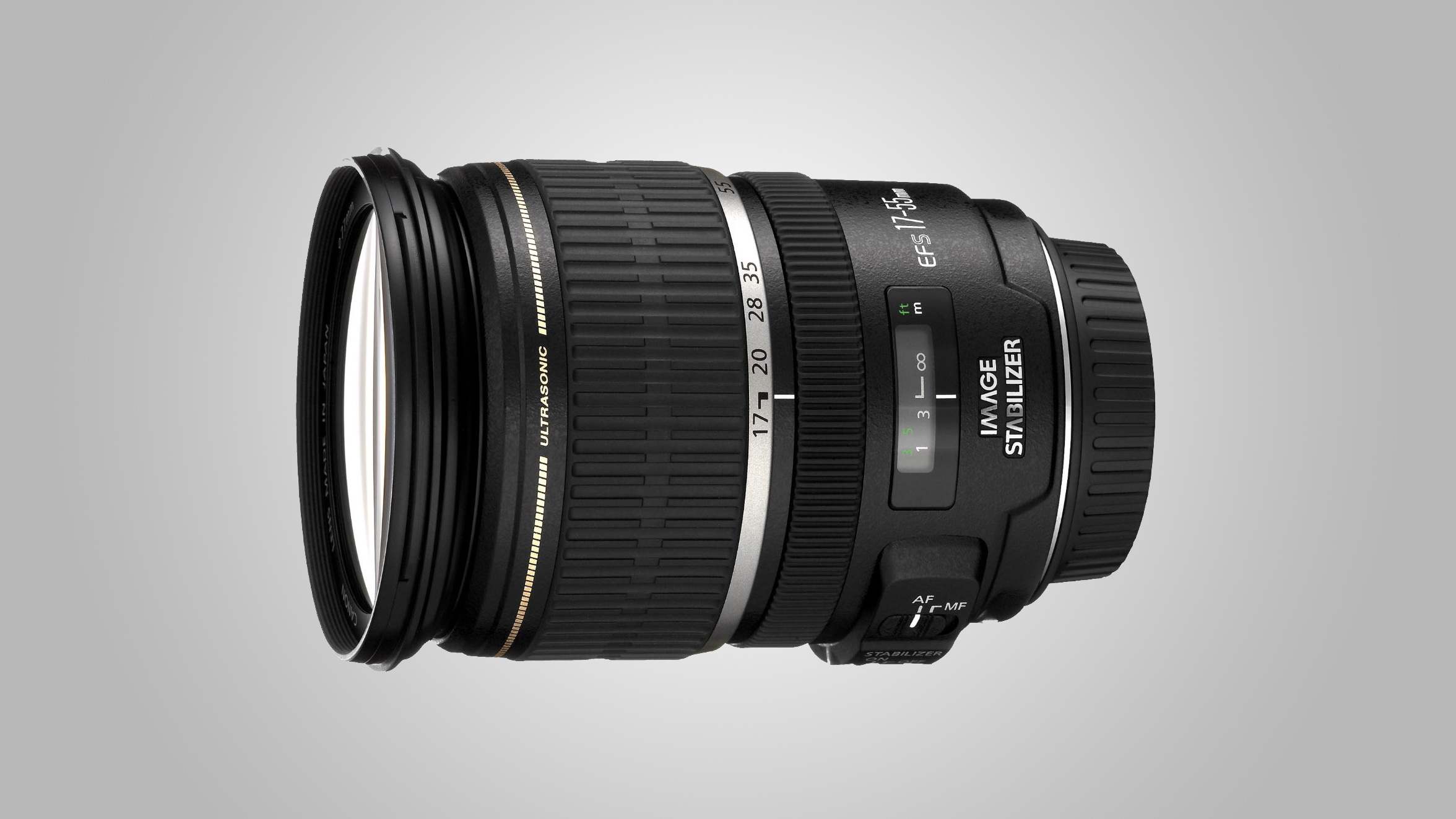
This lens is now more than a decade old, but don't let that stop you from considering it. While the camera bodies of 10 years ago might look outdated nowadays, that's less of a problem with lenses where designs don't change quite so rapidly. This classic zoom lens is the only one on the list to feature a fast and constant (meaning that it's available through the whole zoom range) f/2.8 aperture, making it great for creating shallow depth of field effects and shooting in low light. There's also a range of enthusiast-friendly features such as ring-type ultrasonic autofocus and a focus distance scale beneath a viewing window. You pay a price for these great specs though, with it being the most expensive standard zoom for APS-C format Canon cameras - still if you need something versatile for everyday usage, it's a great option.
Great-value option: Sigma 17-70mm f/2.8-4 DC Macro OS HSM | C
This third-party option is fairly compact and lightweight. While it doesn't have the f/2.8 constant option of the Canon, f/2.8-4 is still fairly wide. It delivers impressive image quality and comes at a bargain price.

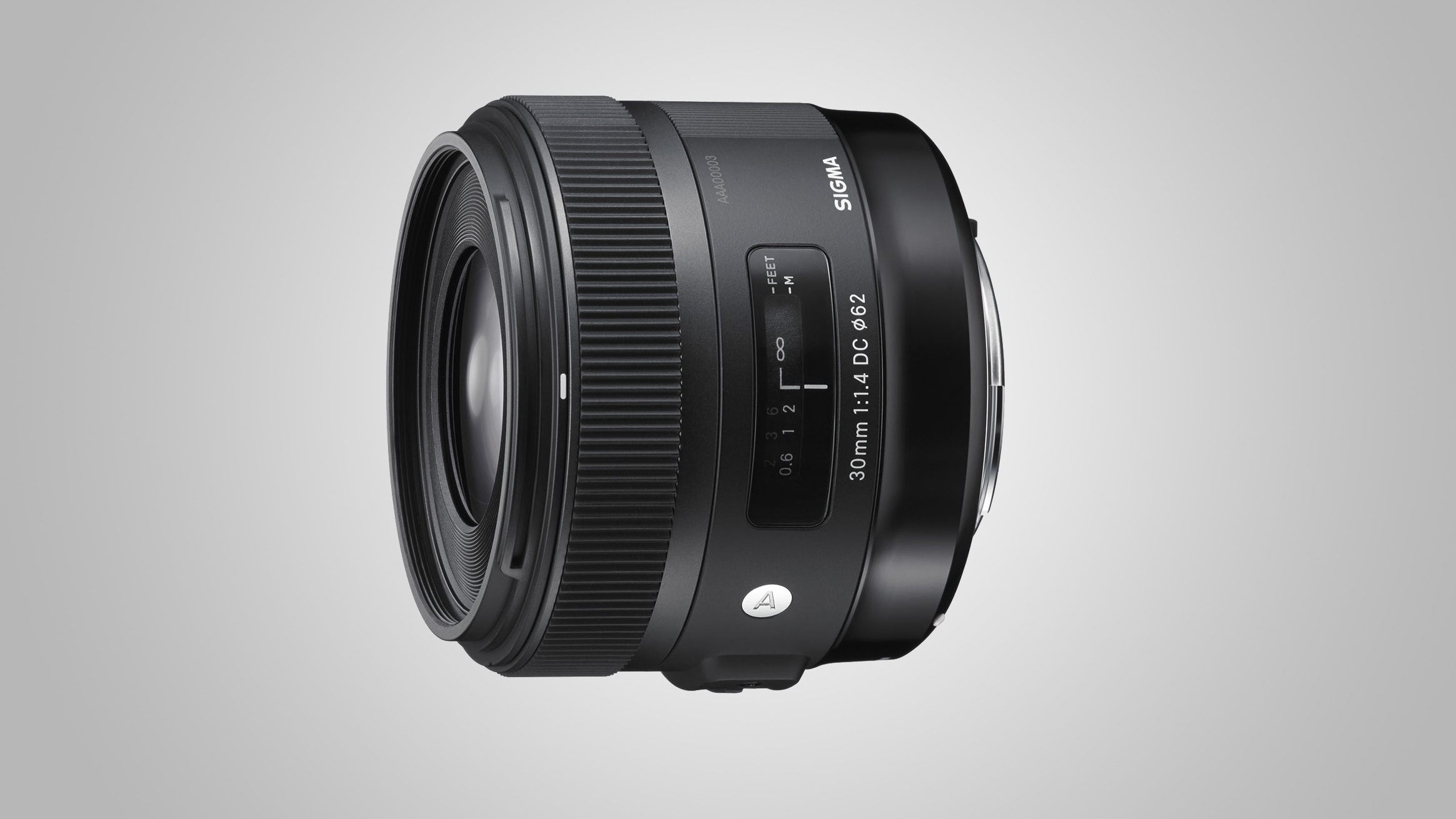
Canon's 1.6x crop factor makes this Sigma 30mm equivalent to around 48mm - that's pretty close to the classic 50mm focal length beloved by many. It's also one of Sigma's 'Art' class lenses, meaning that you get a beautiful construction, as well as a fast f/1.4 aperture. You get fast shutter speeds in low light without needing to boost your ISO settings, but you also get a nice and tight depth of field. Sharpness is impressively good, even at the widest available aperture. Meanwhile, autofocusing is fast due to the rear-focusing mechanism that drives the smaller, rear elements of the lens via a ring-type ultrasonic system. Further good news is that the front element neither extends nor rotates during focusing.
Great-value option: Canon EF-S 24mm f/2.8 STM
Teeny tiny and extremely lightweight, this 'pancake' lens is less than an inch in length and only weighs 125g. Although f/2.8 isn't a super fast aperture, image quality is excellent and it's a charming little prime lens for travelling light. What's more, it's super cheap, too.

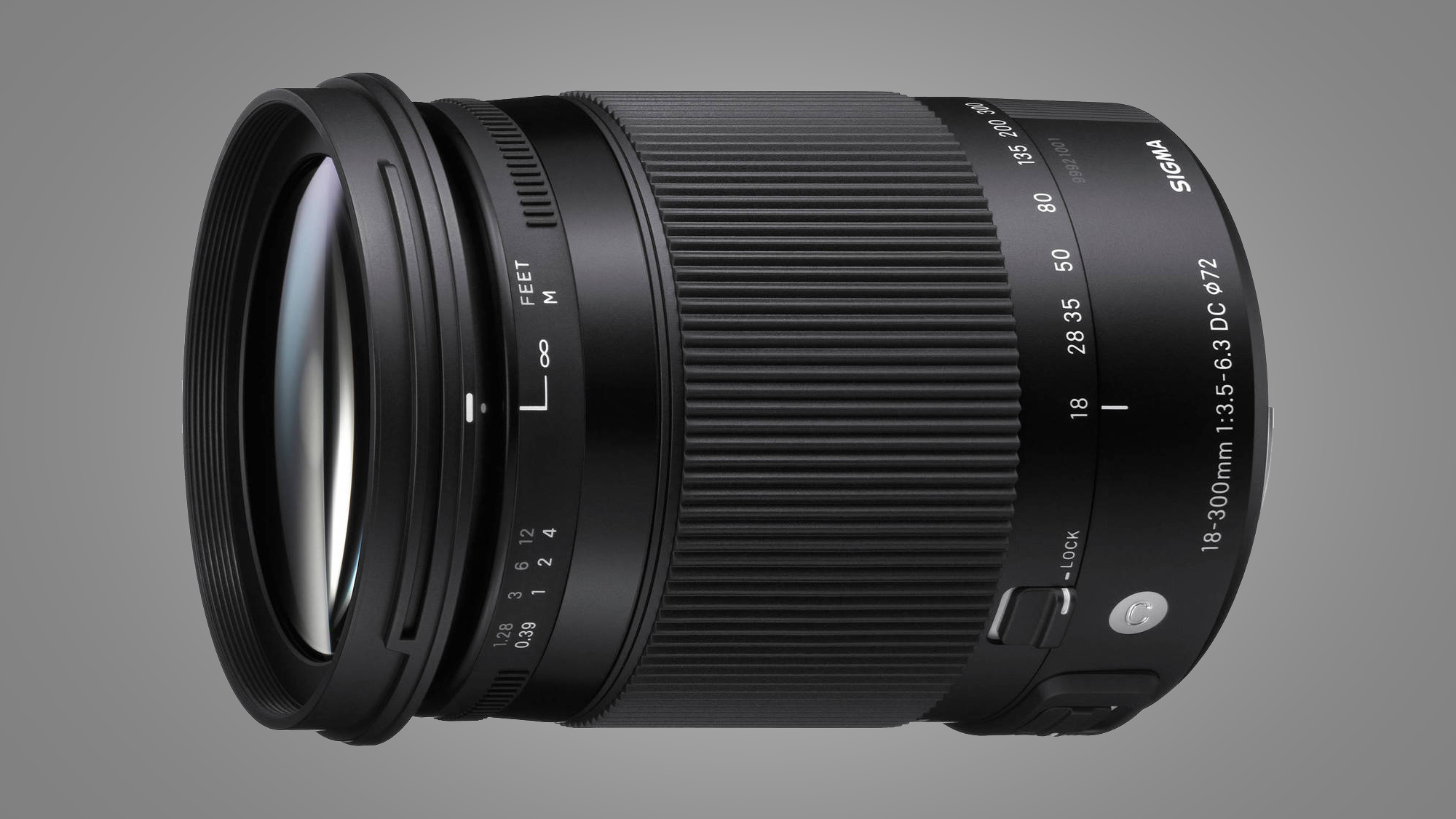
Canon’s own-brand EF-S 18-200mm superzoom lens is pretty ancient and lacking in telephoto reach. Tamron makes some very good alternatives, with 16-300mm and 18-400mm options that go considerably wider and longer, respectively. For our money, however, this Sigma 18-300mm gives the best balance of supersized zoom range and impressively sharp image quality without being overly large or heavy. As such, it’s typical of Sigma’s ‘Contemporary’ line up of lenses.
The only minus points are that it lacks weather-seals and the focus ring rotates during autofocus, but it’s sufficiently far forward so that you can easily keep your fingers clear. All in all, it’s the ideal travel lens for Canon APS-C format DSLRs and a great all-rounder for whenever you need to keep swapping between wide-angle and telephoto focal lengths, and everything in between.
Great-value option: Tamron 18-200mm f/3.5-6.3 Di II VC
Remarkably compact and lightweight for a superzoom, the new edition of Tamron’s 18-200mm makes an excellent all-in-one ‘travel lens’, and is unbeatable value at the price.

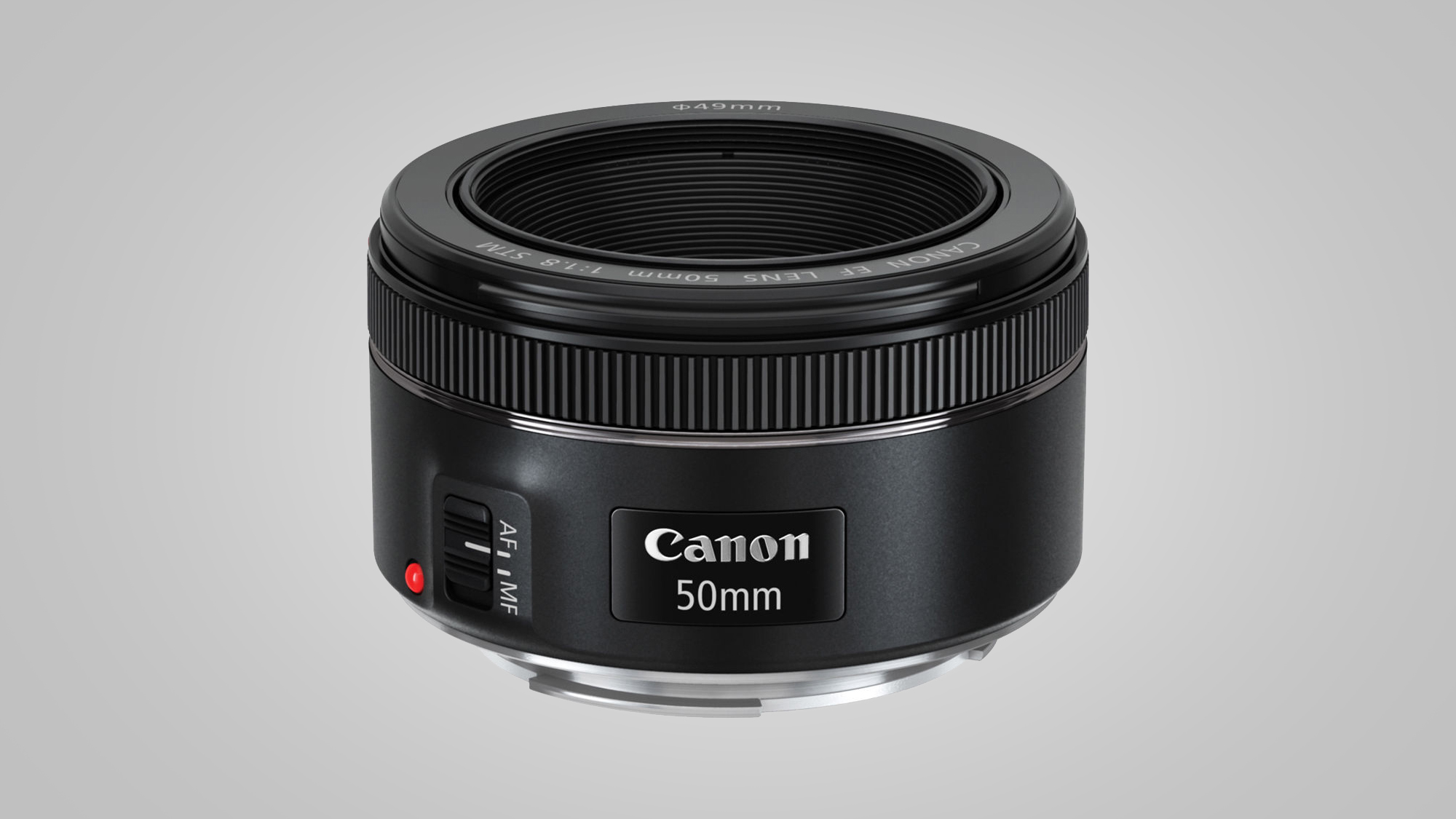
Ask any Canon user what their first prime lens was and they’ll probably tell you it was the 50mm f/1.8. Small, affordable and a great way to get to grips with the demands of large-aperture photography, it’s long been a go-to for those looking to spice up their photography for cheap.
The good bits first: it’s not unusual to find this 160g beauty for fantastically low prices, and it’s great. In our tests, chromatic aberration was well-controlled, even when shooting wide open. It’s sharp, too – it isn’t magnificent at f/1.8, but if you can close down as little as two stops you’ll be rewarded with an f/4 lens that makes a great job of any image you manage to catch focus on. Because it’s virtually weightless, it handles really nicely and feels like a natural fit whether you use it on a low-end APS-C body or a high-end body with a vertical grip.
Of course, it’s not perfect. One of the changes between this version of the 50mm f/1.8 and the previous model is the addition of the STM (Stepper Motor) focus system. This means that even in manual focus, the focus ring is a fly-by-wire system that drives the focussing elements of the lens.
Canon’s claim that the system is 'near silent' is pretty accurate, but for video work 'near silent' just doesn’t cut it. Manually focussing the lens results in a noise that sounds a bit like a coat being zipped up, so make so mistake about it – there is no silent way to use this lens, which means videographers who capture audio on-board should look elsewhere. If you capture audio externally or are a stills photographer looking to invigorate your photography with a small, fast, affordable lens, this should still be at the top of your list.

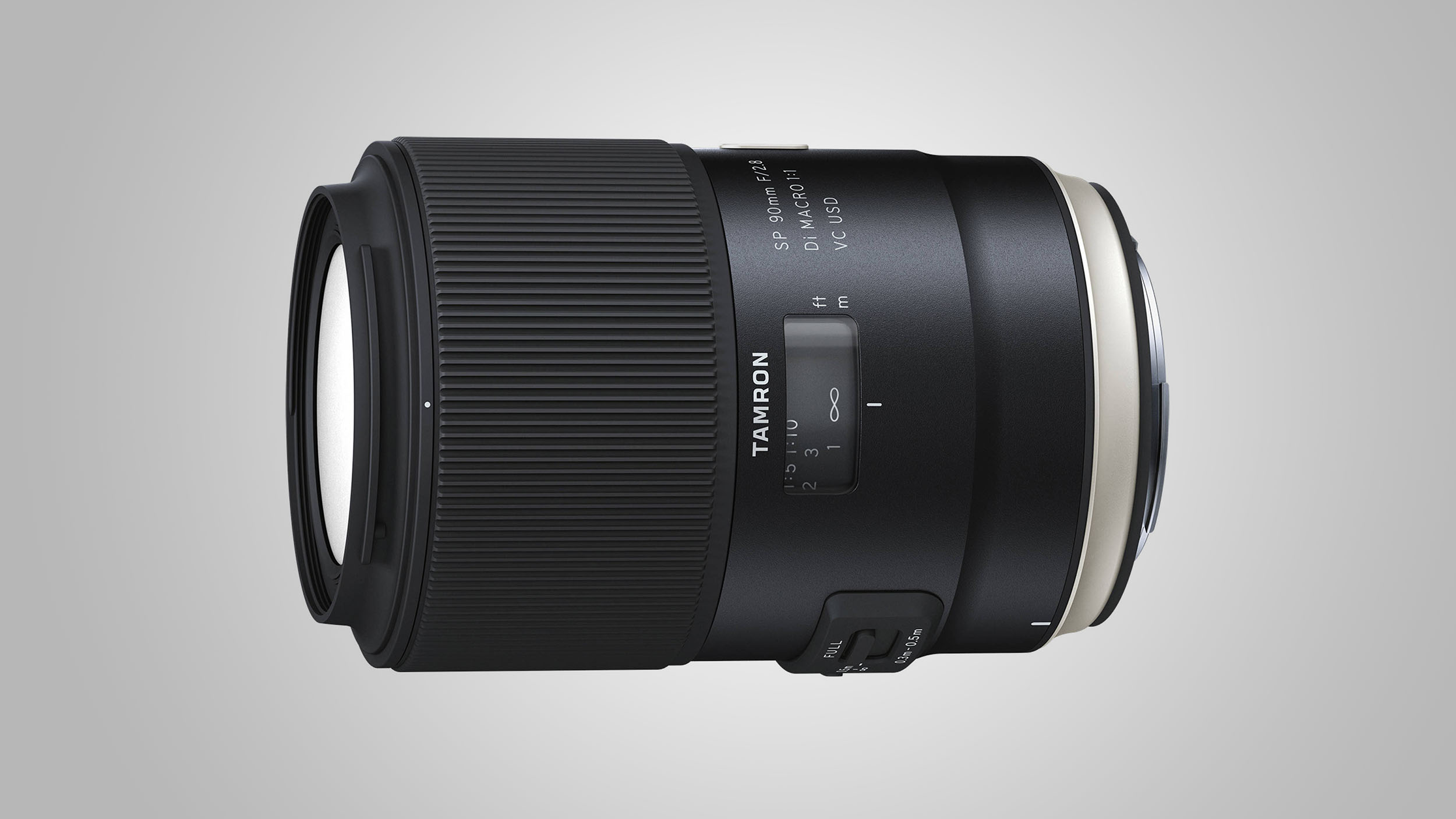
Following on from a preceding Tamron 90mm macro lens of the same name, the latest version has higher-grade glass, dual nano-structure coatings, improvements to the weather sealing, plus a fluorine coating on the front elements. The biggest improvement comes in the form of a redesigned autofocus system which has been specifically optimized for close-up shooting, plus a new 'hybrid' optical stabilizer that has been designed for counteracting axial shift (that's up-down or side-to-side movement) as well as the usual angular vibration (aka wobble). It's fairly similar to Canon's flagship EF 100mm f/2.8L Macro IS lens, but our tests reveal that the Tamronh as the edge for image quality, plus it has the bonus of being less expensive, too.
Great-value option: Sigma 105mm f/2.8 EX DG OS HSM Macro
Lacking the hybrid stabilization system and the weather-sealing of the Tamron, this Sigma never-the-less has excellent handling and great image quality.

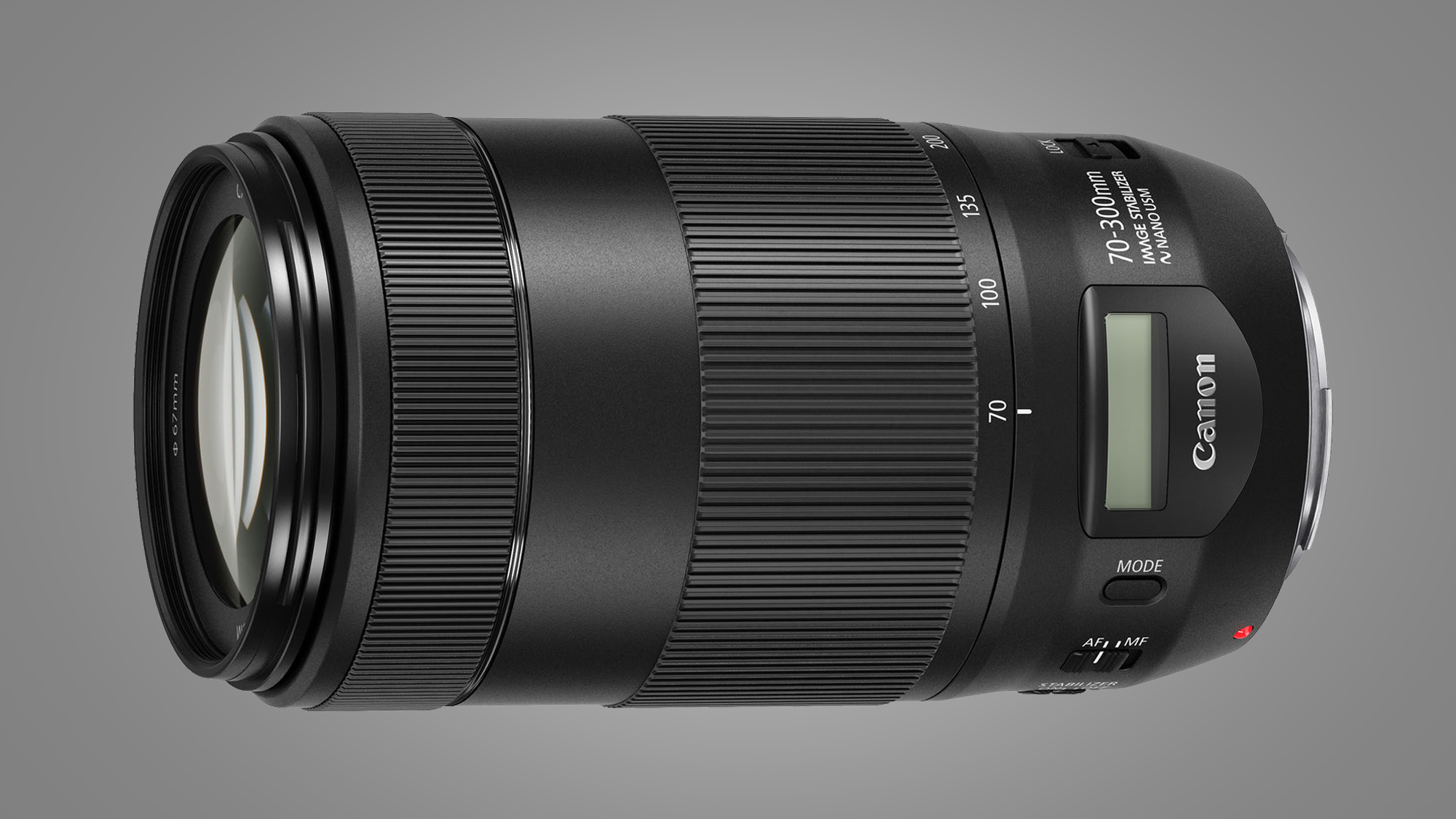
Canon makes a low-budget EF-S 55-250mm lens (see below) which is designed specifically for APS-C format cameras. For superior build quality, image quality and all-round performance, this full-frame compatible EF 70-300mm is a better buy for APS-C cameras, with the advantage that you can still use it if you upgrade to a full-frame camera later on.
Highlights include a revolutionary ‘Nano USM’ autofocus system that’s super-fast for stills while offering smooth and virtually silent transitions when shooting video. Handling is excellent, with a 4-stop image stabilizer and a neat multi-function digital display that can cycle through focus distance, focal length and stabilizer effectiveness at the touch of a button. Like most other non L-series Canon lenses, it lacks weather-seals and you need to buy the hood as an optional extra which, in this case is surprisingly pricey (ET-74B, $45/£76).
Great-value option: Canon EF-S 55-250mm f/4-5.6 IS STM
For a telephoto zoom lens, this Canon optic designed especially for APS-C cameras is happily compact and lightweight. Some of the weight saving comes from it having a plastic, rather than metal mounting plate, but that's not too bad a compromise to make for the price. As we've seen with other STM lens, the stepping motor autofocus system works well for stills and movie recording. Throughout the zoom range sharpness is good - even when shooting at the widest aperture - while the image stabilizer gives you about three stops.

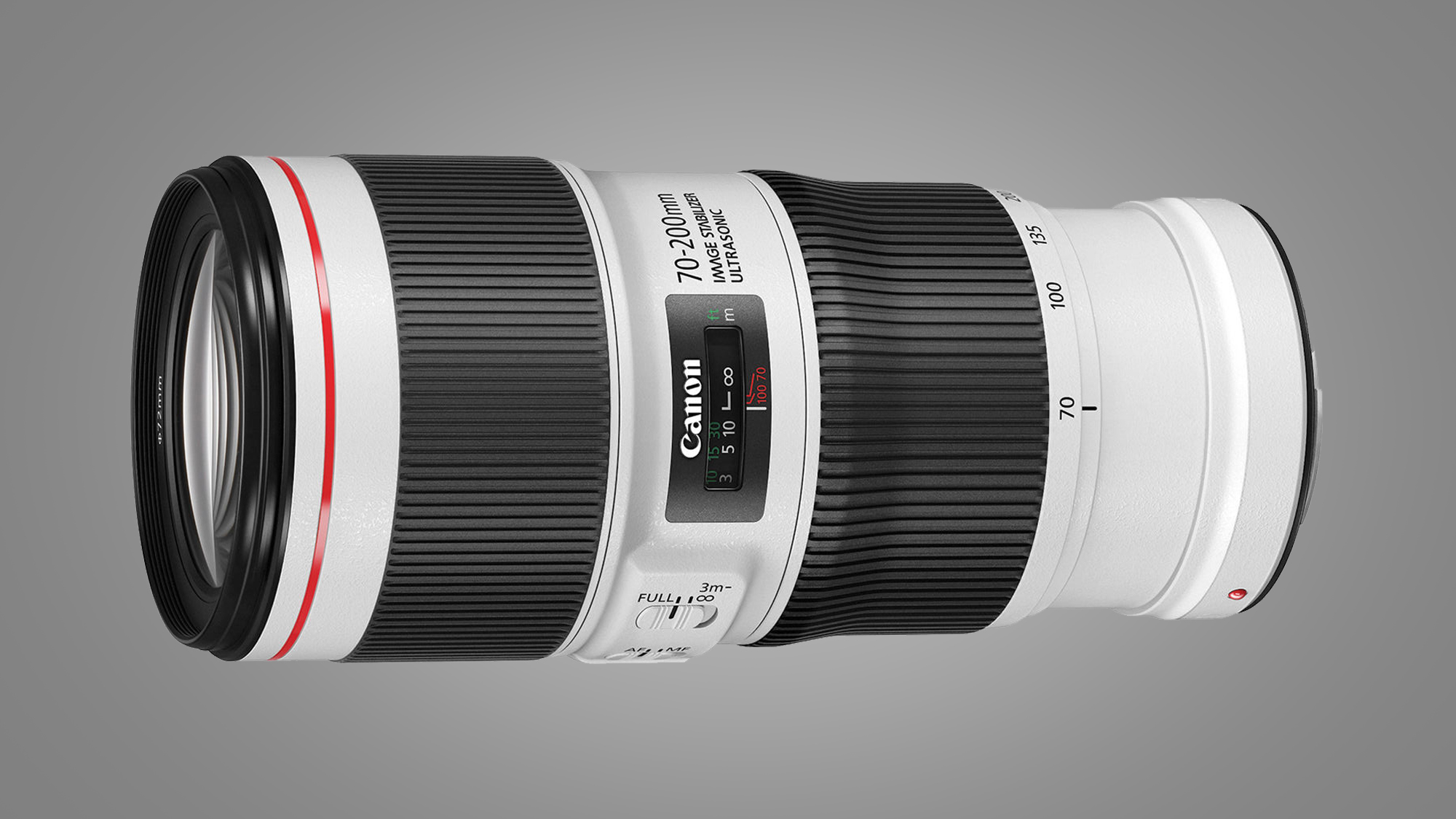
The Mark II edition of Canon’s 70-200mm stabilized L-series represents a major upgrade over the original. Like our top choice of budget telephoto zoom, this one is full-frame compatible but really bumps up the quality. Typical of L-series lenses, it’s built to a pro-grade standard and features rock-solid, weather-sealed build quality, along with exotic handling characteristics.
The conventional ring-type ultrasonic autofocus system is amazingly fast and whisper-quiet, while the image stabilizer is first-class with up to 5-stop effectiveness and three switchable modes for static and panning shots, as well as an option that only applies stabilization during actual exposures. This can make it easier to track erratically moving objects in the viewfinder. Naturally it doesn’t have the telephoto reach of a 70-300mm lens but gains a faster aperture that remains constant throughout the zoom range. And the 200mm focal length is equivalent to 320mm in full-frame terms, when shooting on an APS-C format camera, thanks to Canon’s 1.6x crop factor.
Great-value option: Tamron 70-210mm f/4 Di VC USD
Similarly compact and lightweight, Tamron’s 70-210mm lens has the same f/4 constant aperture rating but is much less expensive to buy. It includes a more basic 4-stop stabilizer, weather-seals and, again, a tripod mounting ring is available as an optional extra.

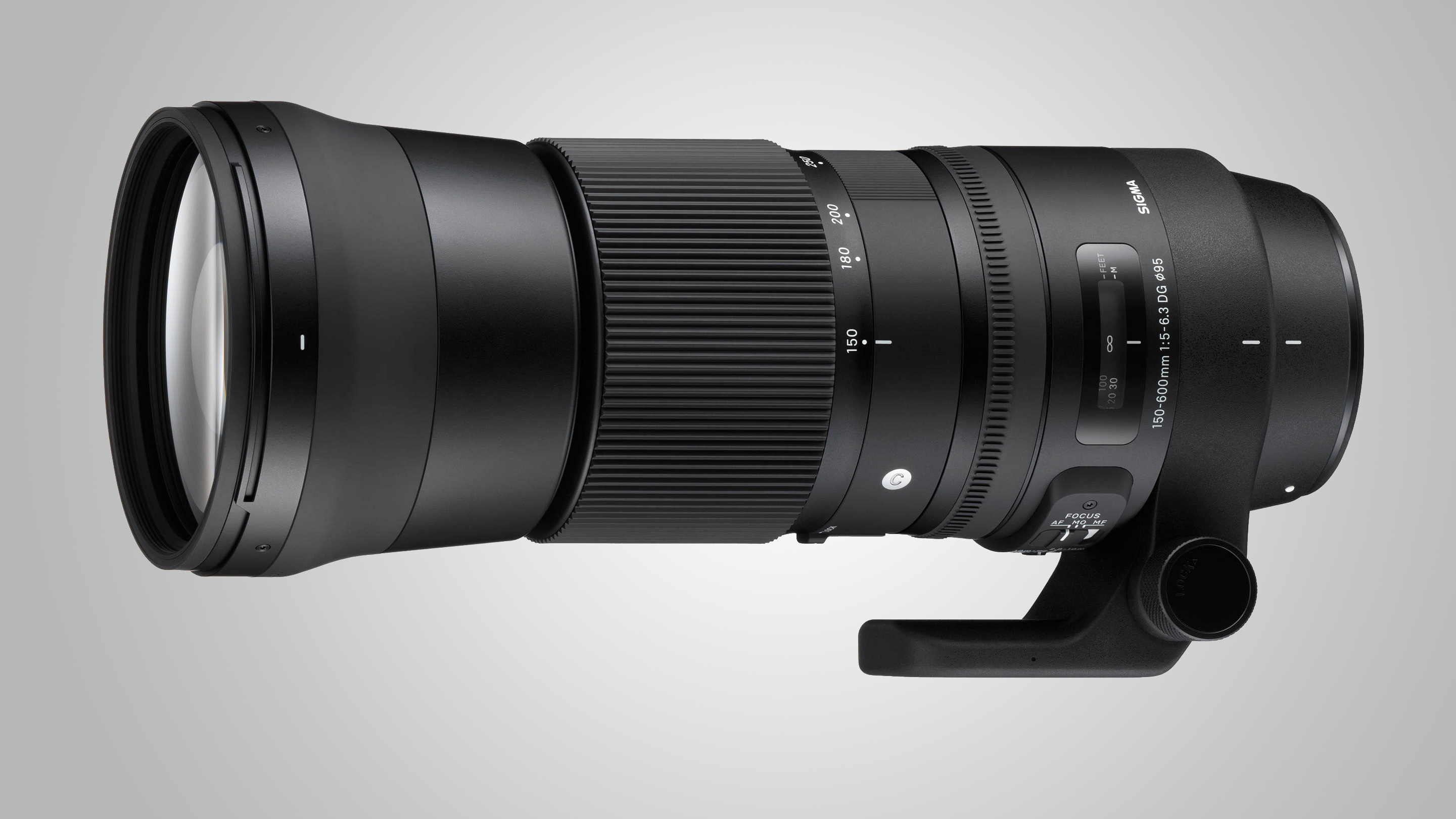
Despite the fact that this lens delivers a ridiculous long effective focal length of 960mm at its longest end of its zoom range when used with an APS-C format body, it's surprisingly not too much of a monster. Coming in at less than 2kg, it's the ideal option for wildlife photographers - indeed it's almost a kilogram lighter than Sigma's 150-600mm Sport lens. You get many of the same features as its bigger sibling, including dual, switchable autofocus modes, dual-mode stabilization and a dual-position autofocus range limiter. You also get the same zoom lock mechanism which lets you lock the lens at any marked (numbered) position. As for performance, that's great too with fantastic autofocus speeds, stabilisation and sharpness. Handling is also great, too.
Great-value option: Sigma 100-400mm f/5-6.3 DG OS HSM | C
The maximum focal length is comparatively modest but Sigma’s Contemporary class super-telephoto zoom is nicely compact and lightweight, making prolonged handheld shooting less of a strain.

- Best Canon camera
- Best wide-angle lenses for Canon DSLRs
- Best telephoto lenses for Canon DSLRs
- Best super-telephoto lenses for Canon DSLRs
- Best macro lenses for Canon DSLRs
- Best portrait lenses for Canon DSLRs
When you're using a full-frame Canon EOS camera such as the EOS 5DS and 5DS R, with their 50.6MP image sensors, the lenses you use with it need to be super sharp. even cameras like the Canon EOS 5D Mark IV and the Canon EOS 6D Mark II have fairly high megapixel counts, at 30.4MP and 26.2MP respectively. However, there's more to a good lens than simply its ability to resolve fine detail.
You also need to think about how the lens handles. Fast and accurate autofocusing is of high importance, helping you to catch those once-in-a-lifetime moments which could be anything from a fleeting expression in portraiture to a split-second record-breaking moment in action, sports and wildlife photography. If you need to shoot handheld, effective image stabilization is key.
Even image quality is about much more than sharpness. You also want good contrast, minimal distortion and color fringing, resistance to ghosting and flare and reasonably low vignetting (darkened image colors). Various aspects of image quality can sometimes be corrected in-camera – or even in post-processing – but getting it right via the lens in the first place is always preferred.
Other facets of image quality are harder to quantify, like ‘bokeh’ (the attractiveness of defocused areas within images). It’s a critical aspect of performance for ‘fast’ lenses that enable a tight depth of field, as well as enabling you to retain moderate shutter speeds even under dull lighting without the need to really push your camera’s ISO setting.
Unlike with the systems of some other manufacturers, including Nikon and Sony, you can’t mount a lens that’s designed for a Canon APS-C format body on a full-frame camera
Canon's lenses differ a little from some other manufacturers – including Nikon and Sony – in that you can't mount a lens designed for Canon APS-C format bodies on a full-frame camera. Forget about shooting in 'crop mode' – you'll need to invest in the right type of lenses, which is something to think about if you're upgrading from APS-C to full-frame. Where Canon, Sigma and Tamron classify their APS-C format lenses as EF-S, DC and Di-II respectively, you’ll need Canon EF, Sigma DG or Tamron Di lenses for a full-frame body.
As with the APS-C offerings, it’s not always be the case that Canon lenses do better than competitors from third-party manufacturers such as Tamron and Sigma. Indeed, Sigma in particular has been really upping its game in recent years, with some spectacular Art and Sports lenses that deliver fabulous image quality and all-round performance at comparatively affordable prices.
Based on our extensive lab tests and ‘real-world’ testing, here are best-buy recommendations in a wide range of popular categories, as well as some great-value alternatives to suit tighter budgets.

Best Canon lenses for full-frame DSLRs in 2021:
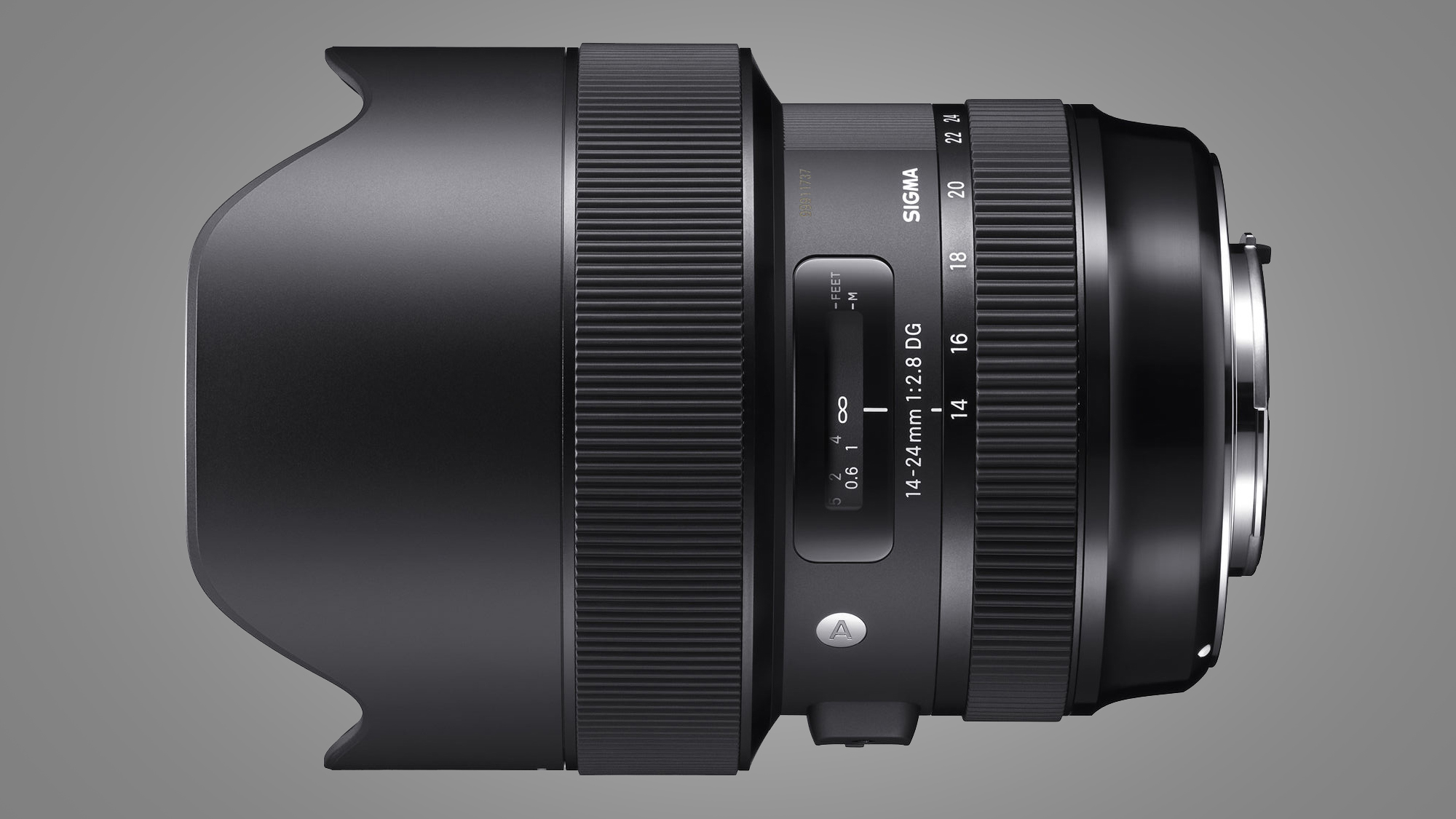
For taking wide-angle perspectives to the extreme in a zoom lens, there’s no beating Canon’s own EF 11-24mm f/4L USM, but it’s fearfully expensive to buy. Sigma’s 12-24mm f/4 Art lens runs it a close second, but the 14-24mm qualifies more as a ‘trinity’ zoom, with a more modest maximum viewing angle combined with a faster f/2.8 constant aperture rating. As such, we feel it’s the perfect compromise.
As with most ultra-wide zoom lenses, the hood is integral to offer physical protection to the protruding front element. A downside is that filters are tricky to use, unless you invest in something like the Lee Filters SW150 Mark II system. The optical path is of the highest order, with ultra-high-precision moulded glass aspherical elements, three FLD (‘Fluorite’ Low Dispersion) and three SLD (Special Low Dispersion) elements. The pro-grade construction includes comprehensive weather-seals, and image quality is fabulous in all respects, particularly in terms of sharpness across the entire image frame and an almost complete lack of distortion.
Great-value option: Tamron SP 15-30mm f/2.8 Di VC USD G2
It’s no cheaper to buy than the Sigma, isn’t quite as sharp towards the edges and corners of the frame, and has more noticeable distortion. However, it’s a top-value buy if you want a wide-angle lens with optical stabilization.

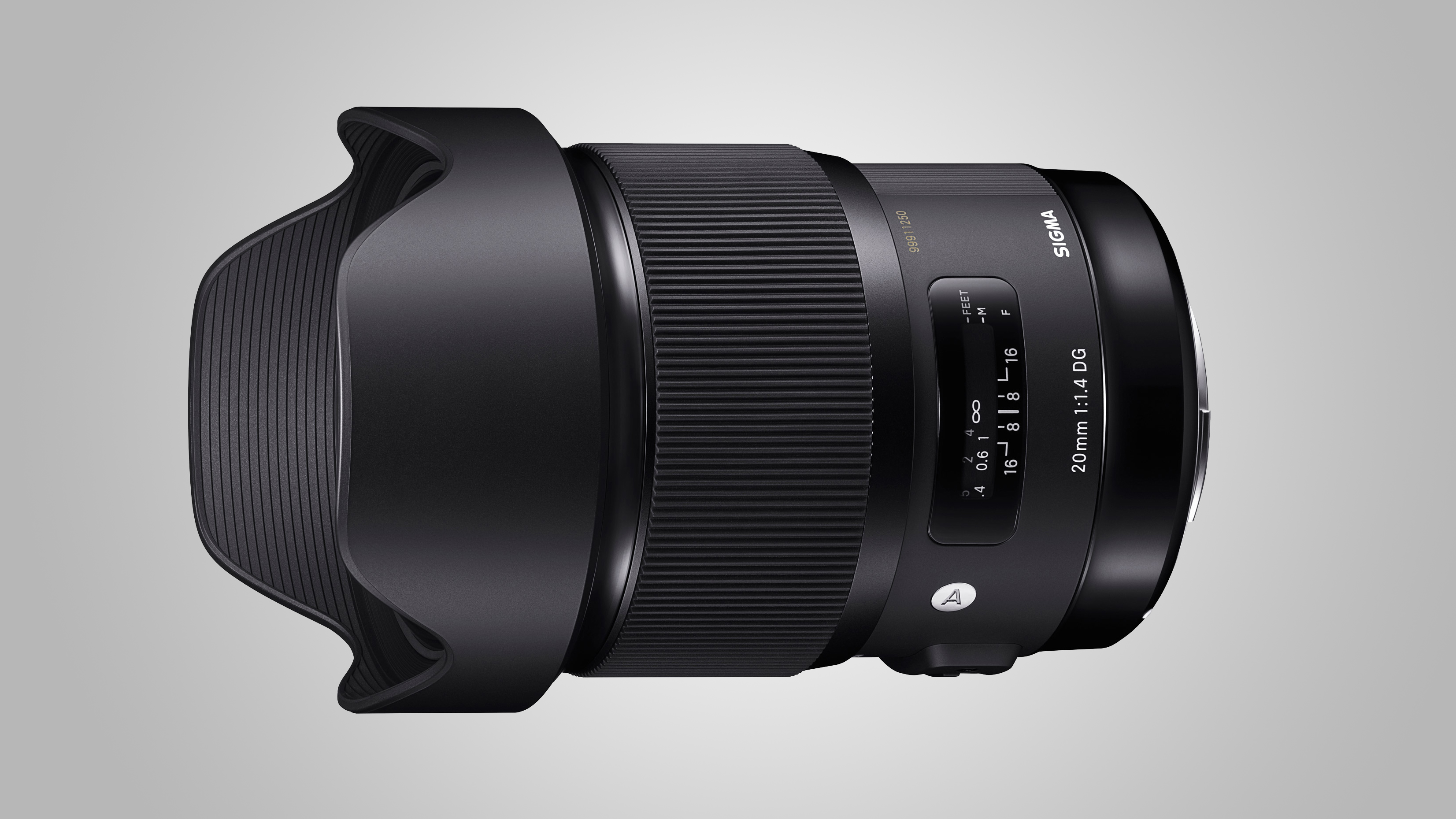
Another option from Sigma's beautiful 'Art' range. These lenses deliver excellent image quality along with a fast aperture range. The 20mm f/1.4 option is the widest f/1.4 the company currently offers (though there is a 14mm f/1.8). It's ability to combine such a wide aperture with a short focal length makes it ideal for a number of different applications. You get no compromises with the design quality, while image quality is superb. The downsides? It's big and chunky, but it really delivers.
Great-value option: Irix 15mm f/2.4 Firefly
It lacks autofocus, but this is a fabulous manual-focus lens that’s beautifully built and a real joy to use. The ‘Blackstone’ edition adds a couple of extra luxuries, but the Firefly is unbeatable value.

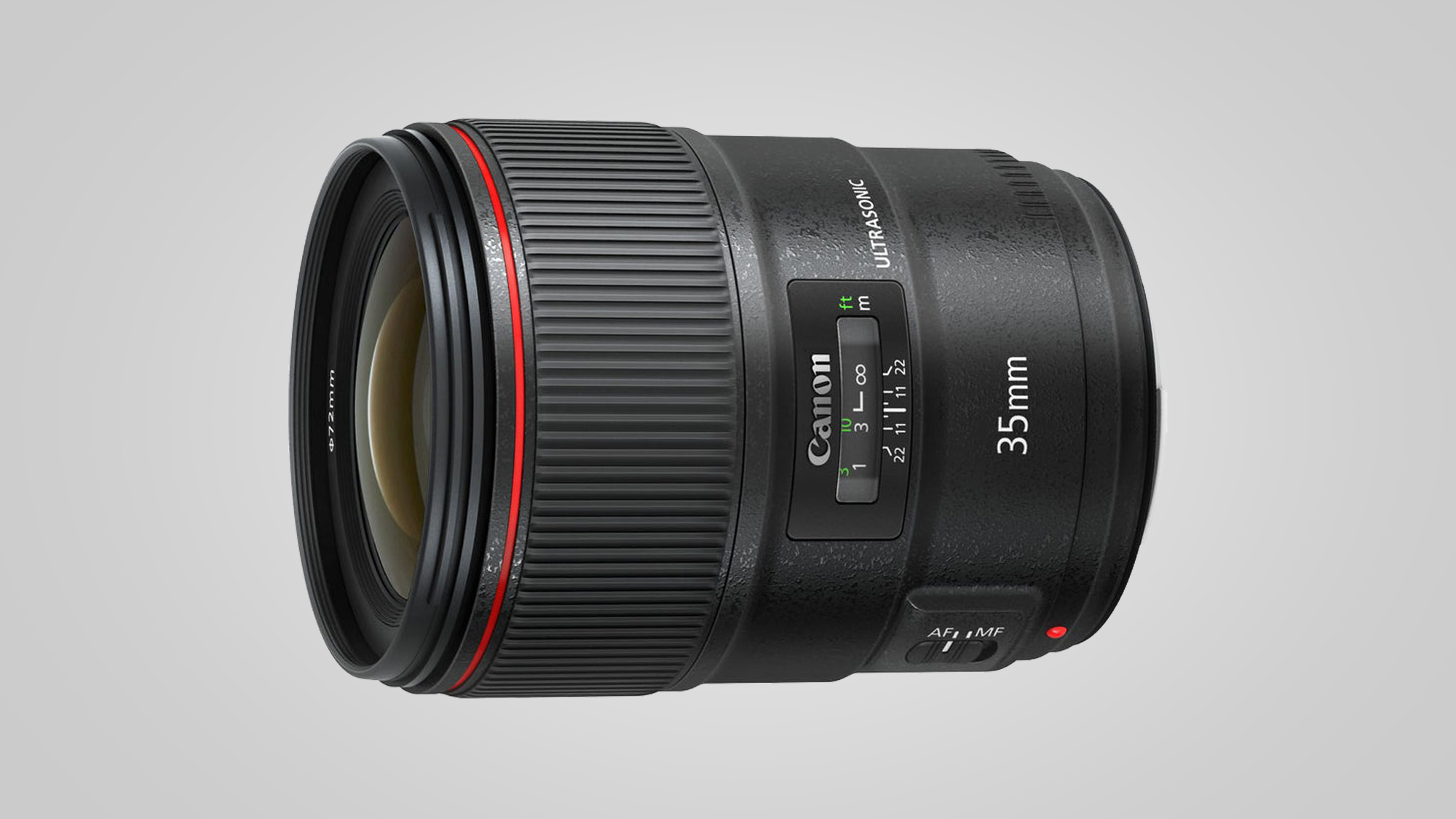
Canon’s standard prime effort is a fantastic example of its type. It’s a substantial improvement on the Mark I, and returned stellar results in our tests. The lens uses Blue Spectrum Refractive optics, which Canon claims minimizes chromatic aberration, and it’s fair to say that, even at f/1.4, we struggled to pick out any purple fringing in our images. We also found images at f/1.4 exceptionally sharp, making this a fantastic lens whatever kind of light you’re shooting in. This lens isn’t just about the sharp bits, of course – shoot wide open and you’ll find gorgeous bokeh thanks its nine-blade aperture mechanism.
Focus comes swiftly and accurately thanks to the USM motor, and the EF 35mm f/1.4L II USM benefits from top-notch weather sealing – we had no hesitation taking it out in poor weather, which means this is a lens for all occasions and virtually all branches of photography.
Can you justify it? It costs more than Canon’s legendary EF 24-70mm f2.8L II USM zoom, which gives you a much broader choice of compositions from a single standpoint. Of course, the 35mm f/1.4L II gives you a massive two stops more aperture, significantly broadening the times of day and conditions you can use it. An obvious lens for wedding and event photography, and a great one for the wish list of everyone else.

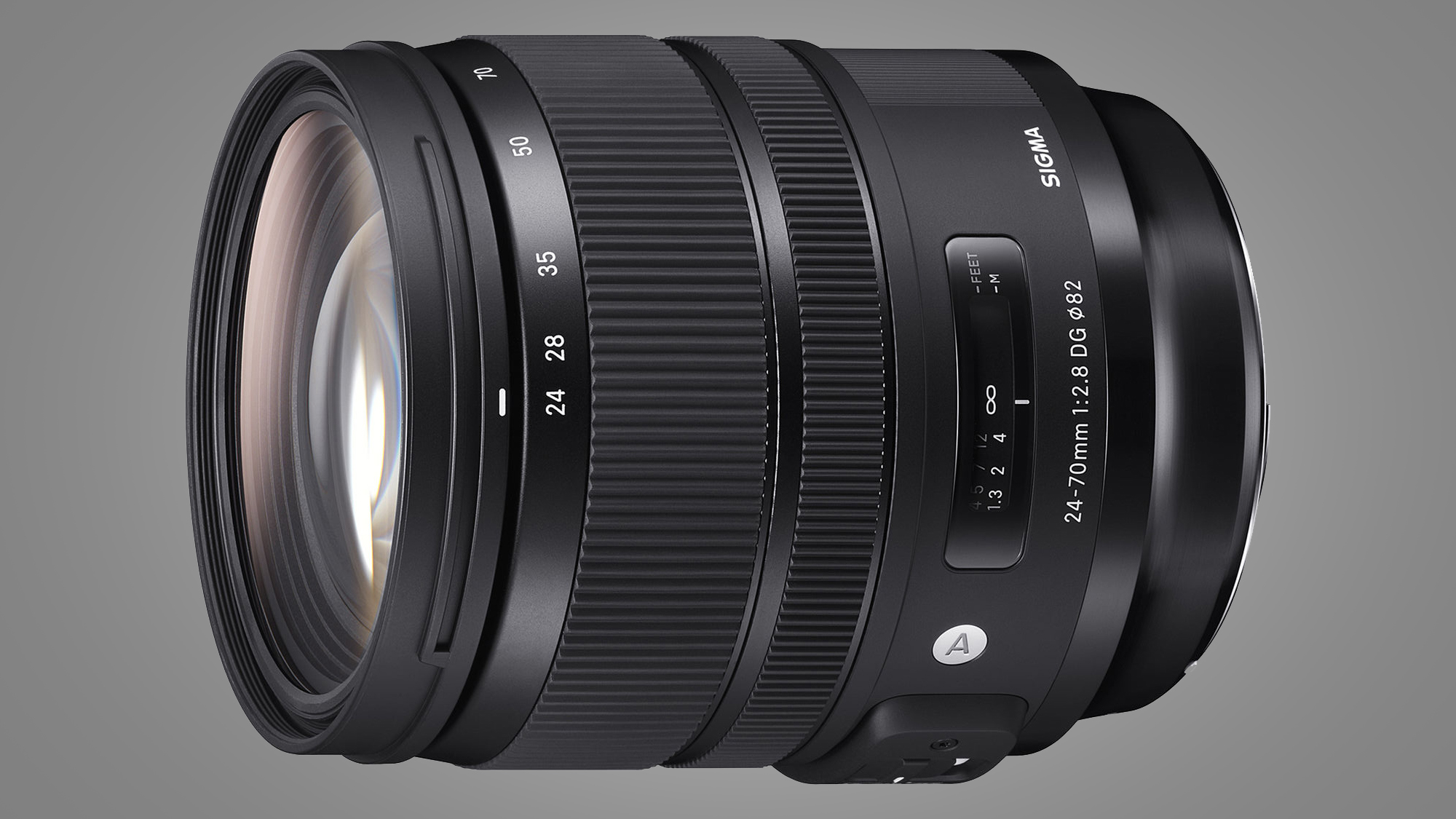
The Canon EF 24-70mm f/2.8L II USM is the standard zoom lens of choice for most leading professional Canon photographers, who are intent on sticking with own-brand kit. For the rest of us, this Sigma Art lens represents much better value, at little more than half the price. Despite being much less expensive to buy, the Sigma has similarly tough build quality and features a weather-seal on its mounting plate. It actually beats the Canon lens by adding an optical stabilizer, which has a useful 4-stop effectiveness.
Another bonus is the three-position autofocus switch which can give priority to autofocus or manual override. In the latter, you can apply manual override of autofocus in continuous AF mode, and without waiting for autofocus to lock on before making manual adjustments. Typical of Sigma’s Art lenses, image quality is superb. Sharpness is excellent throughout the zoom range, even when shooting wide-open, while bokeh is pleasantly smooth. Also like most of Sigma’s recent lenses, automatic in-camera corrections for the likes of peripheral illumination, color fringing and distortion are available.
Great-value option: Tamron SP 24-70mm f/2.8 Di VC USD G2
The second generation (G2) edition of Tamron’s 24-70mm lens is another great buy at the price and, like the Sigma, adds effective image stabilization which is lacking in the own-brand Canon lens. However, in-camera corrections are unavailable with the Tamron.

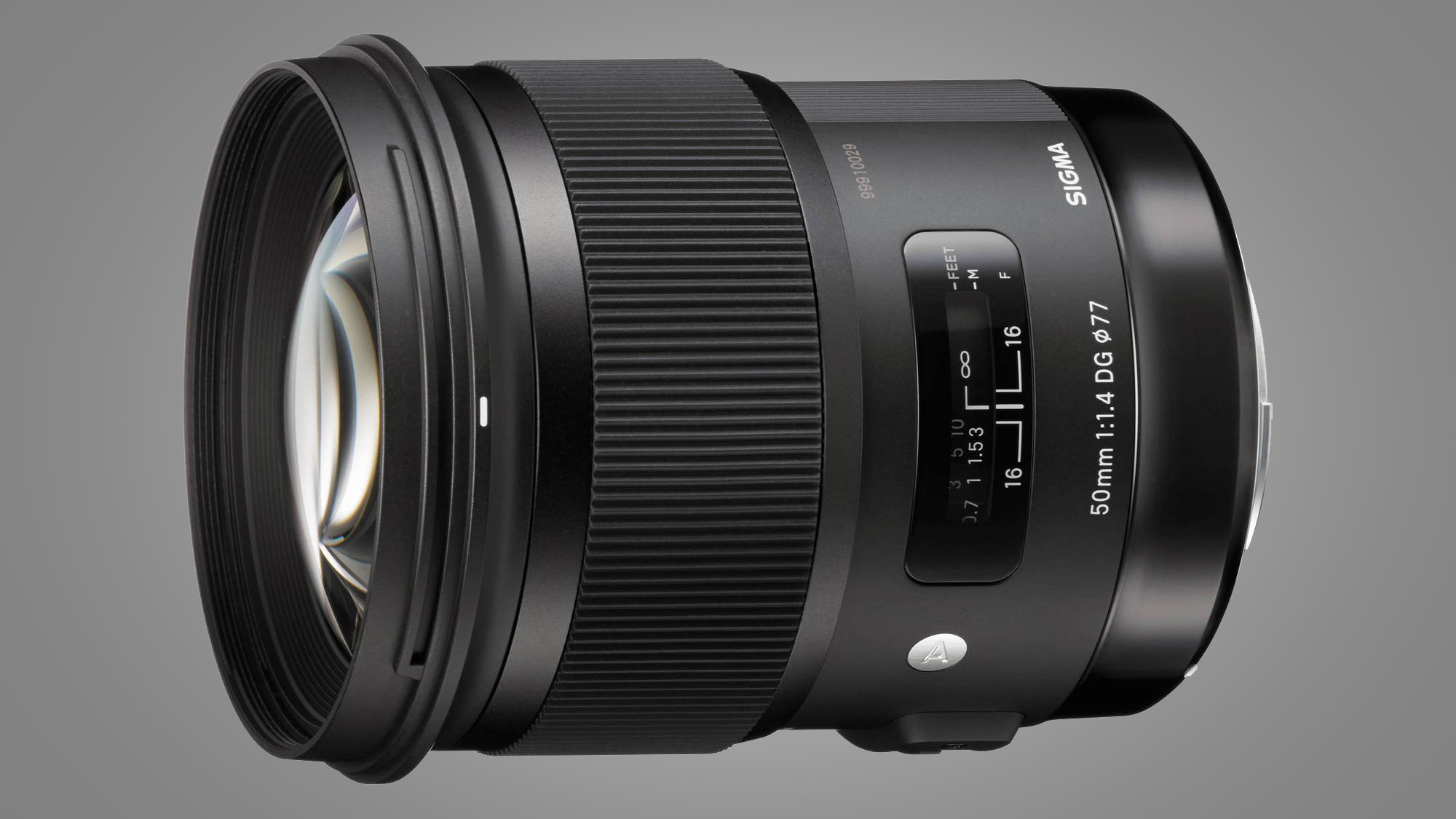
Sigma’s old 50mm f/1.4 lens had a reputation for being big and bulky, but this newer Art lens from the company’s Global Vision line-up is comparatively huge. On the plus side, the large, weighty build is due to there being absolutely no compromise in image quality, which is where the emphasis of this lens firmly lies.
Superb image quality combines fabulous corner-to-corner sharpness, even when shooting wide-open at f1/4, along with beautifully soft and creamy bokeh (the quality of defocused areas). The well-rounded 9-blade diaphragm helps to maintain high-quality bokeh when stopping down a little. Resistance to ghosting and flare is very good and the lens does well to keep color fringing and distortion to a minimum. For a standard prime, it blows Canon’s EF 50mm f/1.4 USM out of the water.
Great-value option: Canon EF 50mm f/1.8 STM
Both our real-world shooting experiences and lab tests prove that this humble, entry-level lens is better than Canon’s pricier f/1.4 version. For the price, you really can't go wrong.

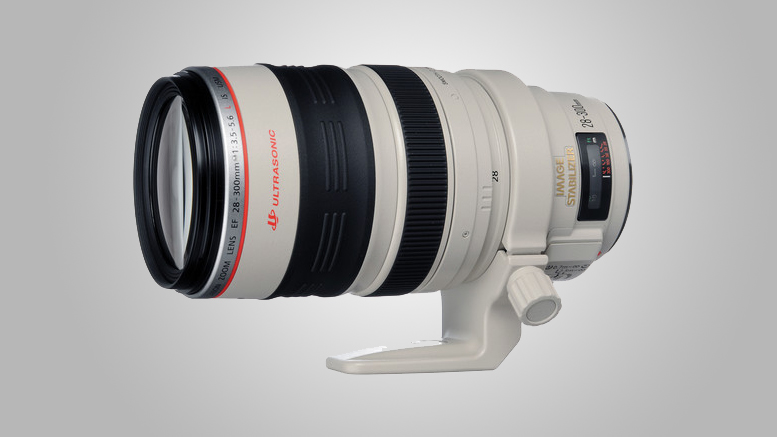
One of the classic reasons for buying a superzoom lens is for holiday and travel photography. The advantage being that you only need to carry one lens with you but still be prepared for lots of different situations. On the whole, those lenses are relatively compact and lightweight - in other words they're ideal for travelling. This is not one of those cases. This is Canon's only full-frame superzoom and to be blunt, it's built like a batteship. In other words, it's huge and it weighs 1.6kg - it's more than twice as heavy as Tamron's 28-300mm full-frame superzoom which competes with it. However, the reason we've included this option is down to fantastic image quality - something which can often be lacking from a superzoom. The main reason to consider this lens is for event photography, where you might need to quickly switch between different focal lengths without the hassle of changing optics.
Great-value option: Tamron 28-300mm f/3.5-6.3 Di VC PZD
This superzoom is much more manageable to handle - not to mention much less expensive - than Canon's option. With pretty good overall image quality, the compromise here is with basic build quality and fairly average focusing.

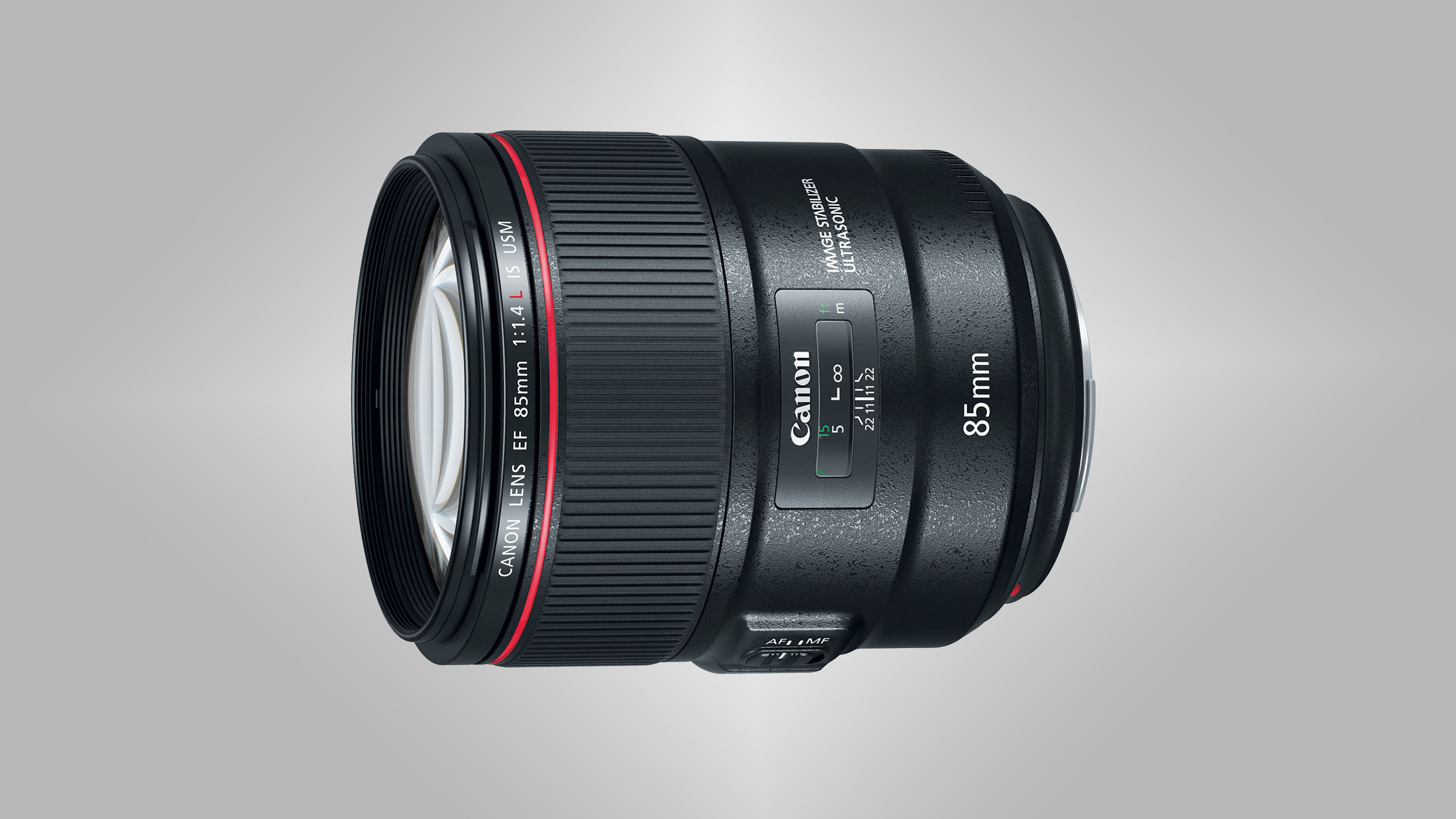
Many times, you'll find that you're forced to choose between a really fast aperture range, or image stabilization. However, with the 85mm f/1.4L IS USM you get both - along with excellent build quality, stunning image quality and top-notch all-round performance. Sharpness is superb right into the corners of the frame - even when shooting wide open. You also get high-quality bokeh, which is as smooth, creamy and rich as you'd like to hope for from a portrait lens.
Read our in-depth Canon EF 85mm f/1.4L IS USM review
Great-value option: Canon EF 85mm f/1.8 USM
On the other end of the budget scale, the 85mm f/1.8 option isn't the fastest lens, and it's not image stabilized either. However, if you're looking for something which combines good sharpness and high-contrast with soft and dreamy bokeh, it's a great value option.


The latest edition of this Tamron classic undercuts Canon’s range-topping EF 100mm f/2.8L Macro IS USM for price, yet goes toe-to-toe in terms of features and specifications. Indeed, the feature list includes a revolutionary hybrid optical stabilization system, which can counteract shift in the vertical and horizontal axes, as well as angular vibration or wobble – this was the Canon’s main claim to fame when it was launched, prior to the arrival of the Tamron competitor. The hybrid stabilization performs better in handheld close-up shooting, but you’ll still need a portrait lens for ultra-close macro shots.
Great-value option: Sigma 105mm f/2.8 EX DG OS HSM Macro
It lacks the Tamron’s hybrid stabilization system and weather seals, but has refined handling and delivers superb image quality.

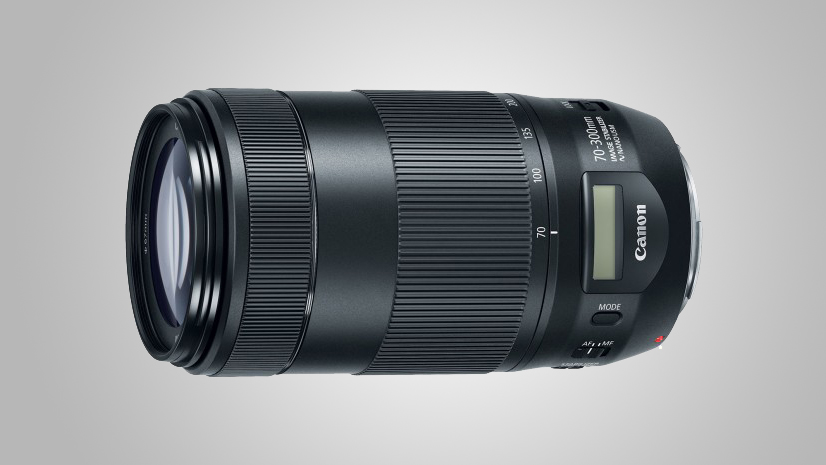
Coming to the market in early 2017, the Mark II version of Canon's original 70-300mm IS USM lens is a great choice for anybody who needs a long focal length - such as wildlife, sports and axtion photographers. The speedy Nano USM autofocusing system is nice and quiet in operation, while the image stabilizer has a four-stop rating. Best of all, images are sharp, with great contrast - even when shooting with wide apertures in the mid-to-long section of the zoom range. For extra neatness, there's a useful digital display on the lens barrel.
Great-value option: Tamron SP 70-300mm f/4-5.6 Di VC USD
This lens is not only our top pick for APS-C format cameras thanks a great performance and an affordable price, this Tamron lens is also a great shout for full-frame bodies. It's not a whole let cheaper than the Canon lens - but you do get a lens hood included in the price.

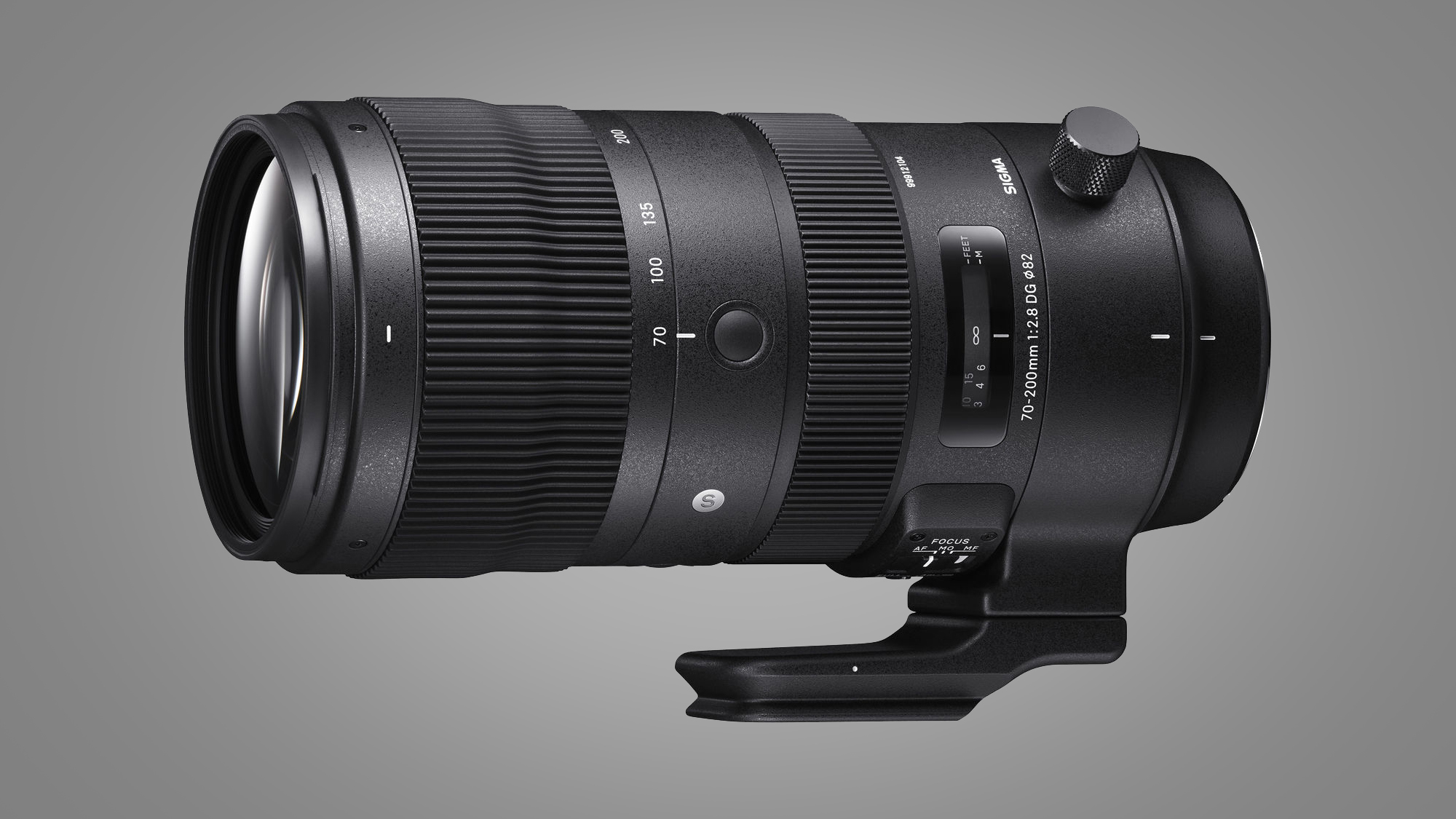
The latest incarnation of Canon’s EF 70-200mm f/2.8L IS III USM lens is only a very minor update over the previous Mark II edition. By contrast, Sigma’s 70-200mm Sports lens is a giant leap forward, compared with its predecessor, and only costs around two-thirds the price of the Canon. Highlights include dual switchable autofocus modes, giving priority to either AF or manual override, an autofocus range limiter switch, and dual-mode switchable optical stabilization for static and panning shots, the latter working with any direction and orientation of panning. There are also two switchable ‘custom’ modes that you can set up with Sigma’s optional USB Dock, for example to alter the autofocus speed or to set how visible the stabilization effect is in the viewfinder.
Further handling bonuses include customizable AF-on/hold buttons around the barrel, between the zoom and focus rings. The lens is larger and heavier than most 70-200mm f/2.8 zooms but comes complete with the usual tripod mounting ring. This has an Arca-Swiss compatible foot, which is removable, but the ring itself and its stubby base can’t be removed to save space. Autofocus is incredibly fast and image quality is to die for. All in all, we feel it’s better than the latest Canon lens and much better value.

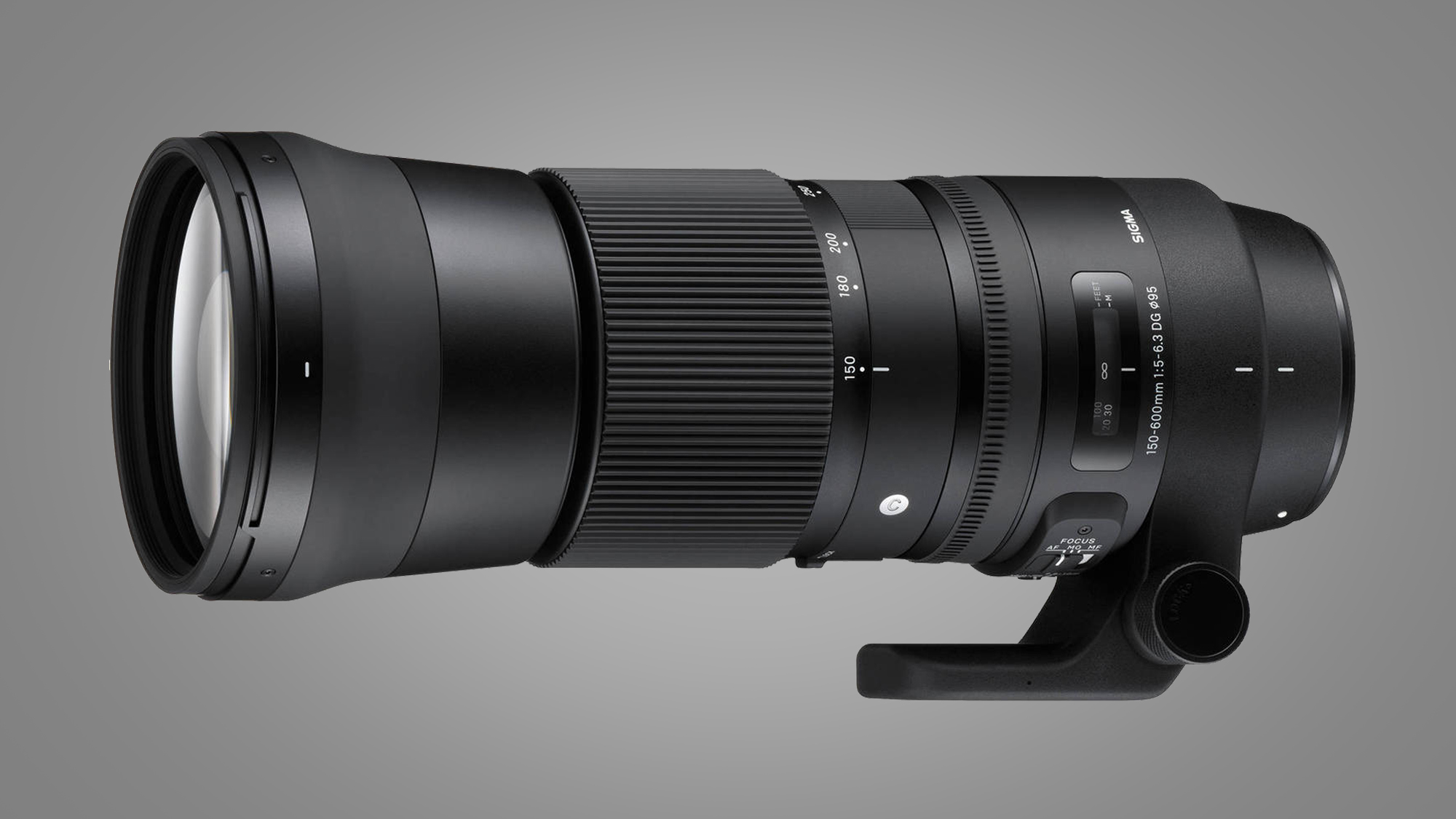
Money no object, Canon’s EF 200-400mm f/4L IS USM Extender 1.4x lens with its built-in switchable tele-converter is a tempting buy but, while it boasts great image quality, it as an eye-watering five-digit asking price. This Sigma lens is less than a fifth of the price but is nevertheless very solidly built and has a raft of handling exotica. As with Sigma’s 70-200mm Sports lens, there’s dual-mode switchable autofocus and optical stabilization modes, plus an autofocus range limiter switch and dual custom modes which you can set up via Sigma’s optional USB Dock.
There’s no shortage of telephoto reach, with a mighty 600mm on tap, which works out to an even more exorbitant 960mm if you mount the lens on an APS-C format camera like the EOS 7D Mark II. Image quality is best-in-class for a 150-600mm lens but there’s no denying it’s a real heavyweight at nearly 3kg, making it about a kilogram heavier than Sigma’s sibling Contemporary lens.
Great-value option: Sigma 150-600mm f/5-6.3 DG OS HSM | C
The Contemporary version of Sigma’s 150-600mm super-tele zoom is only about half the price to buy and is substantially smaller and more lightweight. Image quality and robustness aren’t as impressive but it’s still a great value buy that’s comparatively easy to live with.

from TechRadar: Photography & video capture news https://ift.tt/3xv5O9R
via IFTTT






0 kommenttia:
Lähetä kommentti